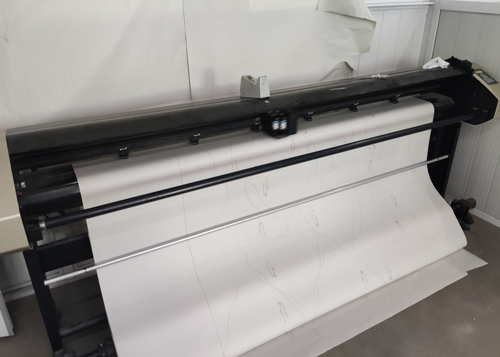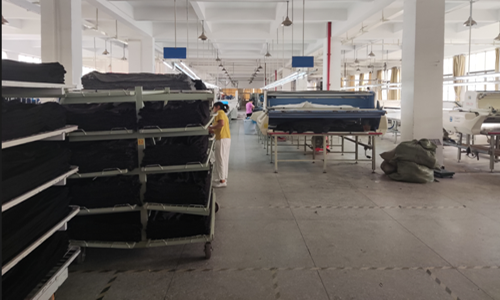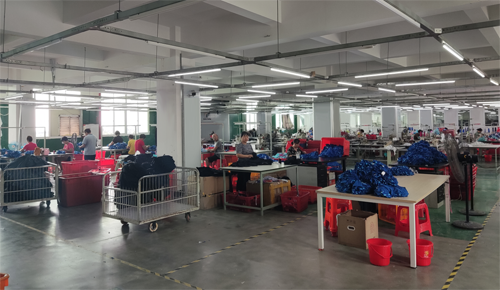Blog
2021-10-29
As yoga pants become more and more popular, everyone now has at least one pair of yoga pants. For yoga pants, everyone not only stays at the level of comfort but also pursues comfortable and fashionable yoga pants. So, how are yoga pants designed and produced? Fitop takes you into the factory to witness the birth of a pair of yoga pants.
Fitop has its own factory, supports ODM and OEM, we produce all kinds of yoga pants, full length, capris, shorts, seamless yoga pants, honeycomb yoga leggings, bubble yoga pants, yoga leggings, etc.
At the same time, we also have all kinds of yoga tops, tanks, sports bras, long sleeves, short sleeves, etc.

Note: Click on the image above to leave your contact information and get a free sample of yoga pants.
The professional design and R&D team determines the specific specifications of each part according to the customer's requirements, sews samples, and makes clothing patterns.
Clothing pattern-making is to make a model of the creative design of clothing. Clothing pattern-making is also called clothing pattern, also called clothing model or clothing template. The correct name should be clothing structural design. After the pattern-making is completed, samples will be sewn for customers to confirm.
Marker means that in the industrial production of garments, before cutting clothes in batches, the pattern (paper version) must be drawn (set) on the special paper of the cutting bed that is the same width as the fabric to be cut. This is called the marker. . Computer typesetting and printing marks can improve the utilization rate of fabrics.

Fitop professionals operate the computerized fabric inspection machine to perform quality control on multiple dimensions such as fabric weight, width, traces, and defects.
The cloth inspecting machine is a set of necessary special equipment for inspecting cotton, wool, linen, silk, chemical fiber and another extra-large format, double-width, and single-width fabrics before production in the clothing industry. The cloth inspection machine automatically completes the length recording and package finishing work. It is equipped with an electronic defect inspection device. It is statistically analyzed by a computer to assist the cloth inspection operation and print out.
The operation method of the cloth inspection machine: provide a hardware environment for cloth inspection, continuously expand the fabric in sections, and provide sufficient light source. The operator can observe by visual observation and find surface defects and color differences. The cloth inspection machine automatically completes the length recording and package finishing work. The cloth inspecting machine with good performance is equipped with an electronic defect inspection device, which is statistically analyzed by a computer to assist the cloth inspection operation and print out.
Pre-shrinking is also called loose cloth in production: there is tension during rolling, which will stretch the fabric, and loosen the cloth after unrolling so that the cloth can return to its natural state (this method is often used for fabrics that do not contain hydrophilic fibers).
The finishing process of using physical methods to reduce the shrinkage of fabrics after soaking in water to reduce shrinkage is also called mechanical preshrinking. In the process of dyeing and finishing, the warp direction of the fabric is under tension, the buckling wave height of the warp direction is reduced, and the phenomenon of elongation will appear. When the hydrophilic fiber fabric is soaked in water, the fiber will swell, and the diameter of the warp and weft will increase, which will increase the buckling wave height of the warp and shorten the length of the fabric, resulting in shrinkage. The percentage of the shortened length to the original length is called the shrinkage rate. Mechanical preshrinking is to spray steam or spray to wet the fabric, and then apply warp mechanical squeezing to increase the buckling wave height, and then dry it loosely. The shrinkage rate of the pre-shrunk cotton cloth can be reduced to less than 1%.
Use a pre-shrinking machine to loosen the cloth and let it stand for more than 48 hours to prevent quality problems such as different lengths, shrinkage, and slack due to shrinkage.

Generally, an automatic spreading machine is used. For elastic fabrics, compared with manual spreading, it can effectively avoid wrinkles and uneven expansion.
Rab is to make the fabric into a multi-layer flat state and spread it on the worktable, which is convenient for cutting and using.
The computerized automatic cutting bed can improve cutting accuracy while improving cutting efficiency.
Cloth cutting is to cut the fabric into pieces according to the layout of the pieces.
The Fitop factory has both an assembly line sewing production line and a traditional sewing production line, which can meet the production needs of various orders. The workshop has a variety of high-end sewing equipment such as four-needle six-thread, three-needle five-thread, etc., which effectively guarantees product quality.
After finishing, remove the excess thread, ironing, and smooth the product.
After the whole is the meaning of finishing the final shipment, we usually call the rear whole, and some are also called the tailor the rear, which actually means the same thing. The composition of the latter part is composed of multiple processes. Usually, there are thread cutting; buttonhole opening; buttoning; jujube; picking the edge of the foot; ironing; inspection; size classification.
Inspection: Professionals conduct all-round inspections on the products to ensure the quality of the products.
Or collectively referred to as post-packaging: From ironing, inspection to packaging, strictly follow the procedures and standardization operations and ensure the quality of the products.

Request a Quote
Request a Quote